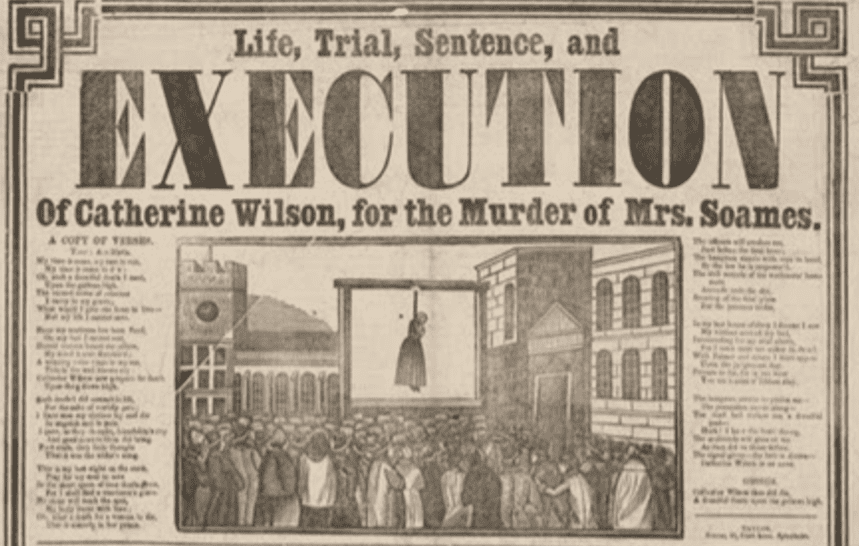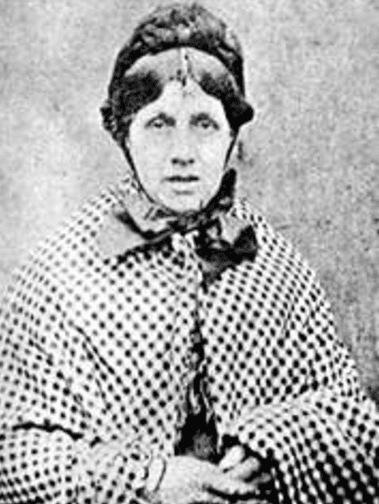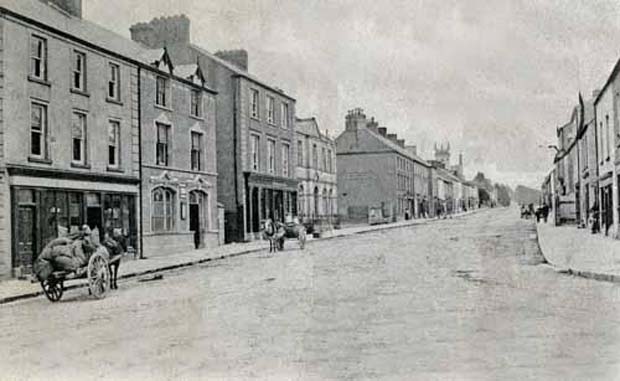Trending Now
From Snapped, to Deadly Women and The First 48, it’s no secret that the modern world is intrigued by murder and mayhem. In addition to TV shows, various books and documentaries seek to spill the secrets of notorious serial killers like the Boston Strangler and the Zodiac Killer.
This obsession is nothing new, of course. Perhaps the most heavily covered serial killer was the 19th century’s Jack the Ripper, whose victims were discussed, at the time, in full-page spreads in newspapers around the globe.
While Jack the Ripper is one of the more well known serial killers of that era, there are myriad other killers nearly forgotten by time, but whose crimes are just as ghastly. Here are seven little-known killers of the 19th century.
1. Sarah Freeman
When Sarah Freeman’s illegitimate son, James, died after experiencing extreme stomach pains, it was thought that cholera had killed him. When Freeman’s husband died in 1843 after experiencing the same complications, suspicions arose. Freeman collected money from a type of life insurance policy her husband had taken out, then fled to London.
She resurfaced a year later at the home of her mother and brother. Her brother Charles let her know she was not welcome, but was nonetheless allowed into the home. Freeman purchased arsenic from the town chemist, which she quickly put to use: her mother died on December 14, 1844, having suffered the same stomach pains as Freeman’s son and husband. The same fate befell Charles on December 31.
This time, Freeman wasn’t able to flee. Doctors found arsenic in the bodies of Freeman’s mother and brother during a postmortem examination; the bodies of Freeman’s son and husband were exhumed and also found to contain arsenic.
Sarah Freeman was charged with murder, and hanged publicly on April 23, 1845.
2. The Midnight Assassin of Austin
Austin, Texas, in 1884, was a glittering city, equipped with elegant opera houses and ranch aristocrats. But in 1884, Austin became famous for something else: one of America’s first real serial killers.
At least seven women met their deaths in brutal crime scenes involving knives, iron rods, axes, and even bricks. According to historian Skip Hollandsworth, the victims—mostly black female servants of wealthy Austin families—had no time to scream before being slaughtered. Due to the similar backgrounds shared by many of his victims, the killer earned a frightening nickname: The Servant Girl Annihilator.
The citizens of Austin cowered in terror. No one was safe, not even the young. Eleven-year-old Mary Ramey was dragged from her bed in the middle of the night, where she was then “stabbed through the ear with an iron rod, and raped.”

Photo Credit: Public Domain
On Christmas Eve, 1885, the murders picked up speed. Sue Hancock was discovered with her head split open by an axe. An hour later, Eula Phillips was found in an eerily similar position. Austin police searched desperately for the killer to no avail. Despite a few good leads, the serial killing spree was never solved—and it remains unsolved to this day.
3. Catherine Wilson
She was deemed the “greatest criminal that ever lived.”
Between the years 1854 and 1862, Nurse Catherine Wilson developed a habit of poisoning her patients.
Her husband is believed to be the first person Wilson killed. After a bottle of cholchicum was discovered on his nightstand when he died, a doctor insisted on a post mortem examination of the body. Wilson resisted, and the doctor backed down.
In 1862, Wilson began working for Mrs. Sarah Carnell. Wilson sweet-talked her employer into writing her into the will. Carnell was found dead days later.
Within days Wilson was arrested for murdering not only her husband, but seven of her patients. Wilson chose her victims specifically, not poisoning them until she’d persuaded them to bequeath her money.
Catherine Wilson was charged with the murder of one of her patients, Mrs. Soames, and executed on October 20, 1862. She remains the last woman to be publicly hanged in London.

Photo Credit: Blogspot, Boston Past
4. Bob Turner
Bob Turner’s bloodthirsty murders stained the pages of The Wilmington Morning Star in January 1874.
Bob had axed his brother to death. Seeking to minimize the damage, Bob called his other brother, Newton, to help. When Newton arrived at the scene, he reeled in horror at the sight of his mutilated sibling.
Bob demanded that Newton help conceal the body. Fearing for his life, Newton agreed, though he told the police about his murderous brother as soon as he could. When Bob Turner was finally apprehended and imprisoned, he attempted to kill his jailor.
Thankfully the jailor lived, though the same could not be said for Bob’s other victims. Bob Turner later admitted to “remembering” that he had killed other people.
The Wilmington Morning Star wrote, “Now that [Turner] has confessed, he delights to talk of many persons he has killed. He gloats over the skill with which he has concealed their [dead] bodies, and declares that if they were got together there would be nearly forty of them.”
5. Mary Ann Cotton
On March 24, 1873, Mary Ann Cotton was hanged for the murder of her fourth husband’s son, Charles Edward Cotton. At 40 years old, she was known as Britain’s first female serial killer: In her wake she left up to 21 dead, including 11 of her 13 children, three of her four husbands, one lover, and her mother. Arsenic poisoning was her method of choice.

Photo Credit: Wikimedia Commons
For 20 years, mysterious deaths surrounded Cotton. A majority of her children died of intestinal problems. Her husbands, from whom she was set to receive life insurance payments after their deaths, died after suffering similar symptoms.
Cotton was sent to hang at the gallows on her execution day, but the drop through the trapdoor was much too short. In the end, she choked to death, the rope a tangled noose around her neck.
6. Walter Millar
In May 1870, a man named Walter Millar entered the London home of a clergyman named Huelin to do some repairs. The clergyman had been planning to leave town, so when he vanished without a trace shortly after Millar began working in his home, the authorities were not too suspicious. In fact, Millar might have gotten away with it had he not called upon another man to help him dispose of his dirty work.
Henry Piper entered the Huelin home on Millar’s behest, to help him remove a large box from the property. Unfortunately for Millar, the box was leaking blood. Piper immediately jumped into action, preventing Millar from escaping and calling the police. The box was found to contain the corpse of Huelin’s housekeeper: Huelin’s corpse was found buried in a newly-dug trench next to the home. Millar was charged with the murders, and hanged on August 1, 1870
7. Joseph Vacher
France had its own Jack the Ripper, and his name was Joseph Vacher. After a brief stint in the French army, he was dismissed for attempting suicide.
He was sent home, where he then attempted a courtship. When the woman refused, Vacher not only shot her multiple times but also lodged two bullets in his own skull. Amazingly, he survived.

Photo Credit: Public Domain
Between 1894 and 1897, Vacher’s killing spree crisscrossed the French countryside. His preferred method of murder was to stab his victims, then, if they were female, sexually assault them.
In August 1897, Vacher was finally caught mid-attack. He was promptly placed in prison, where he admitted to murdering 11 people. Some suggest that the number might be as high as 27. That he preyed largely upon farmhands earned him his gruesome nickname: The Killer of Little Shepherds.
In the early morning hours of December 31, 1898, Joseph Vacher was dragged to the guillotine and executed for his crimes.
This story was first published on The Lineup
Read more below:
9 American Horror Story Characters Based on Real-Life Killers
8 Real-Life Cabin in the Woods Murders That Will Make You Lock Your Doors






